Museum of Antigua and Barbuda
The Museum of Antigua and Barbuda is a perfect spot to learn about the islands’ history from ancient to modern in historic surroundings.

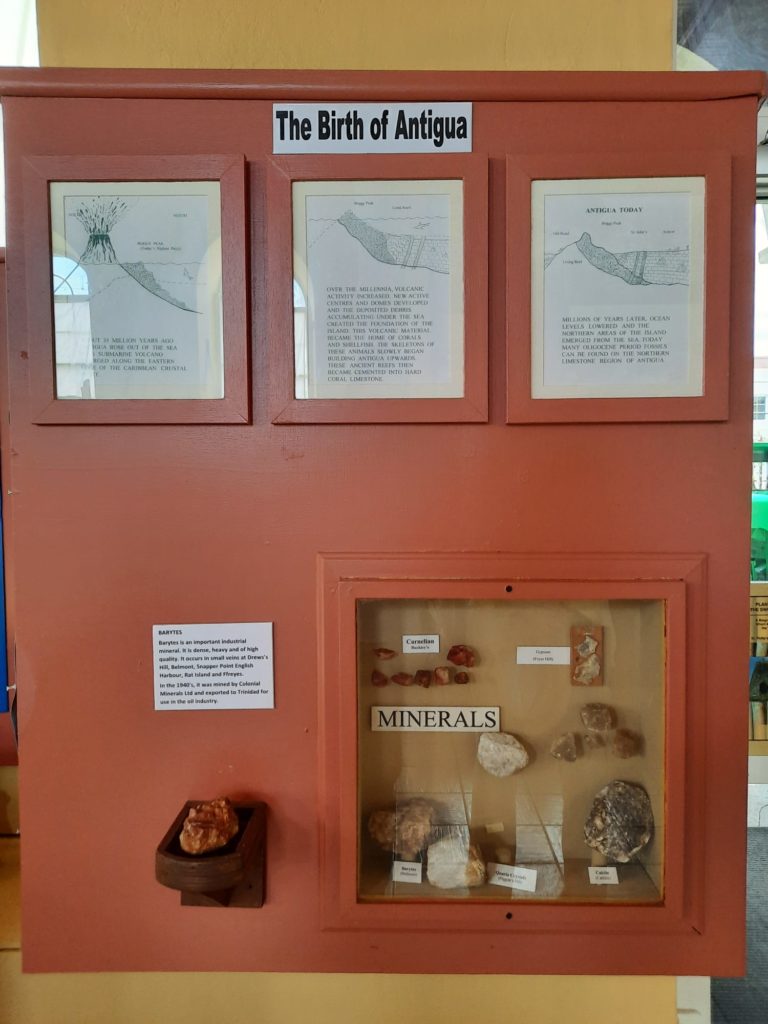
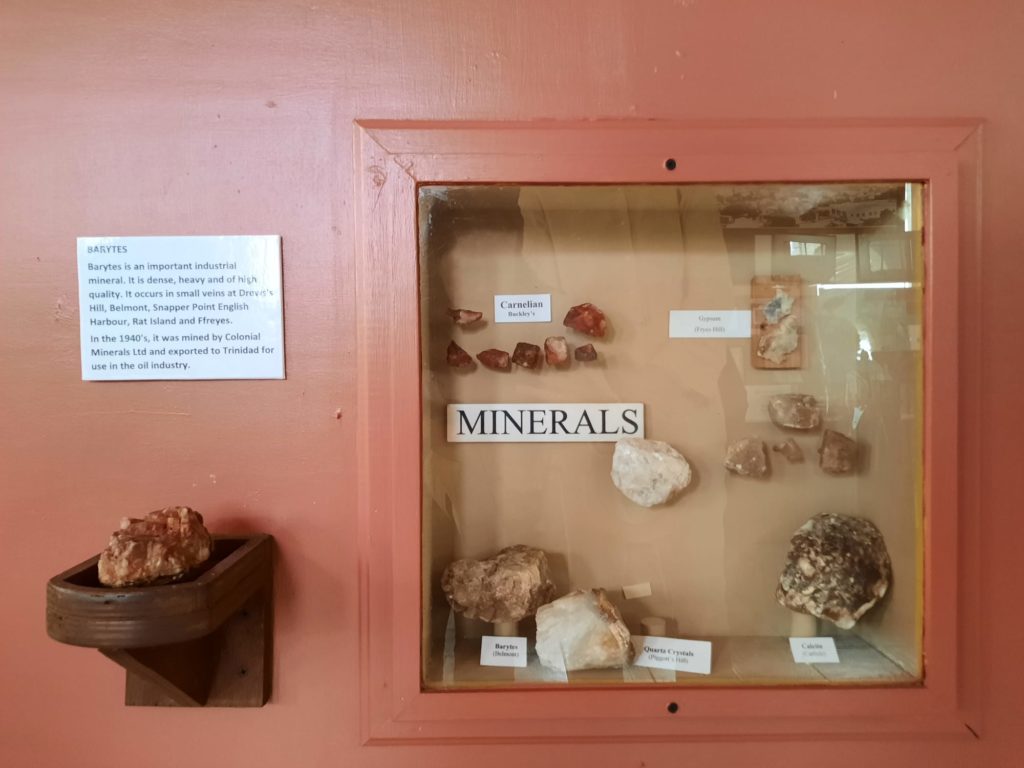


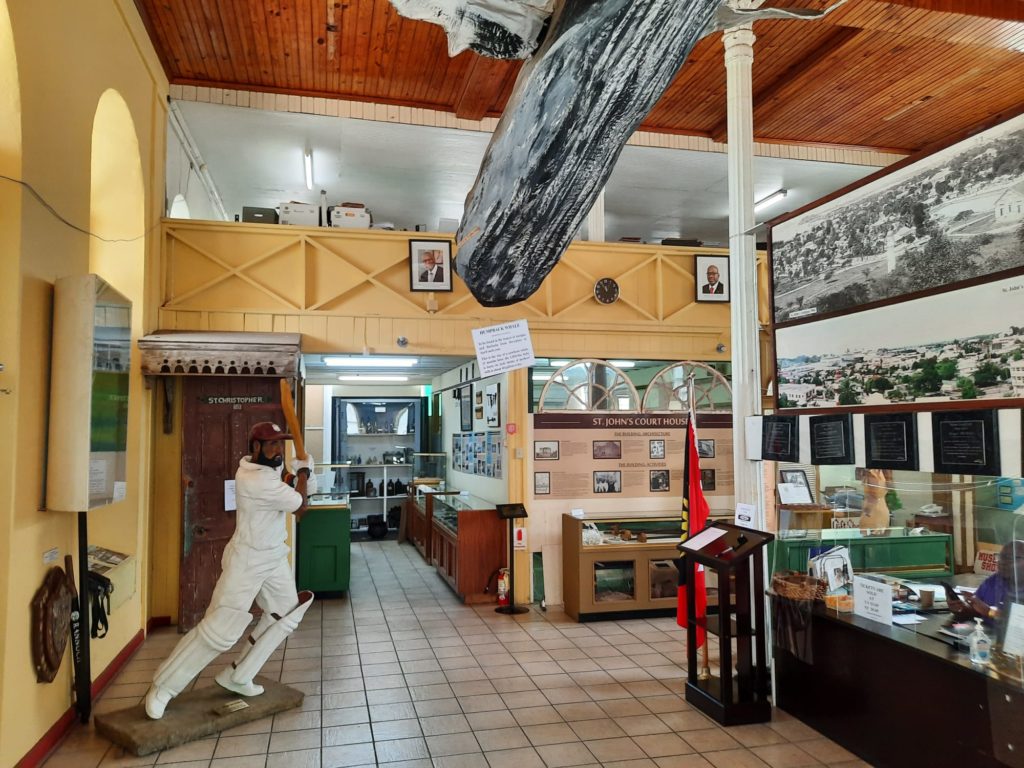
Antigua and Barbuda: A Quick Recap
I’ve covered aspects of the history of Antigua and Barbuda in recent posts. But since today’s subject is the country’s national museum, I thought we could do with a quick recap. The islands of Antigua and Barbuda lie between the Atlantic Ocean and Caribbean Sea. A long time ago when sea levels were lower, they were one island. Today they are about 40KM apart, and are very different geographically and in terms of population and environment. Almost all inhabitants of Antigua and Barbuda live on Antigua, which is hilly with many natural harbours and coves. Barbuda is flat and sun-baked, with a large lagoon home to an enormous colony of frigate birds. Fresh water is relatively scarce on both islands.
The lack of fresh water may have been an influential factor in early population movements. Antigua and Barbuda were inhabited by at least two distinct peoples. The earlier are known as the Archaic or Siboney. The latter were Arawak-speaking peoples from the Amazon Basin. They had left Antigua by the time Columbus arrived in the West Indies, while Barbuda was continously inhabited.
Antigua and Barbuda changed colonial hands a few times, but the British were by far the most constant influence. They colonised Antigua in 1632, and Barbuda in 1678. The islands were part of the Federal Colony of the Leeward Islands from 1871, and the West Indies Federation from 1958. This federation broke up in 1962, and they became part of the West Indies Associated States in 1967. Full independence from the United Kingdom was gained in 1981, and today Antigua and Barbuda remains a member of the Commonwealth and a constitutional monarchy.

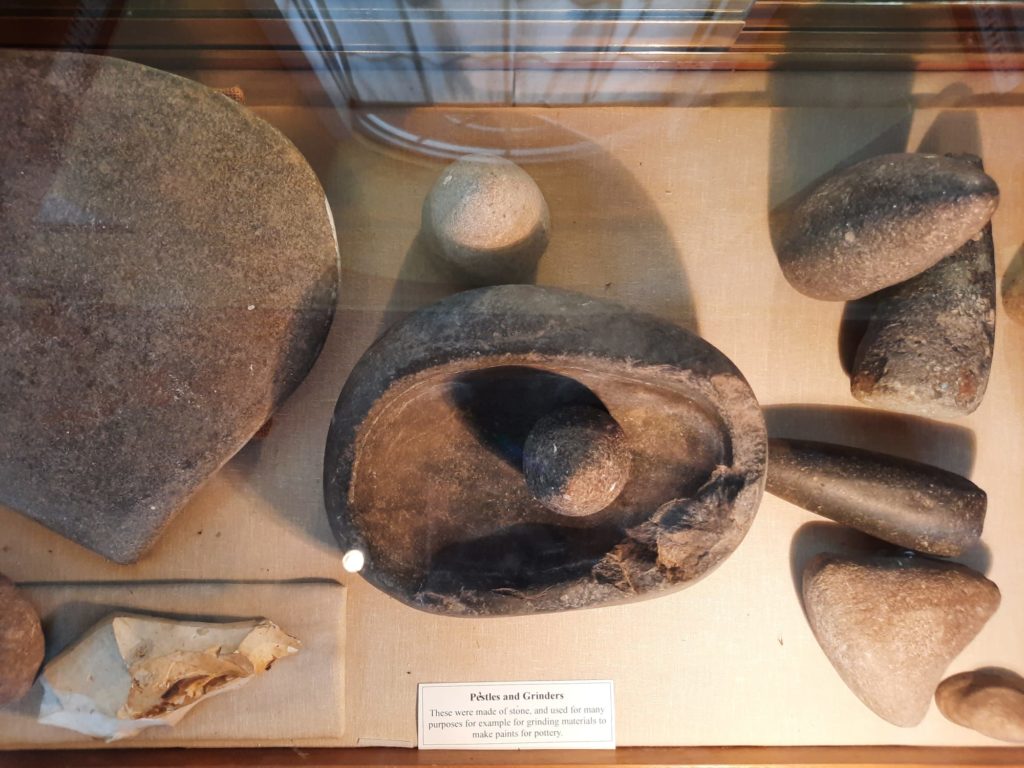

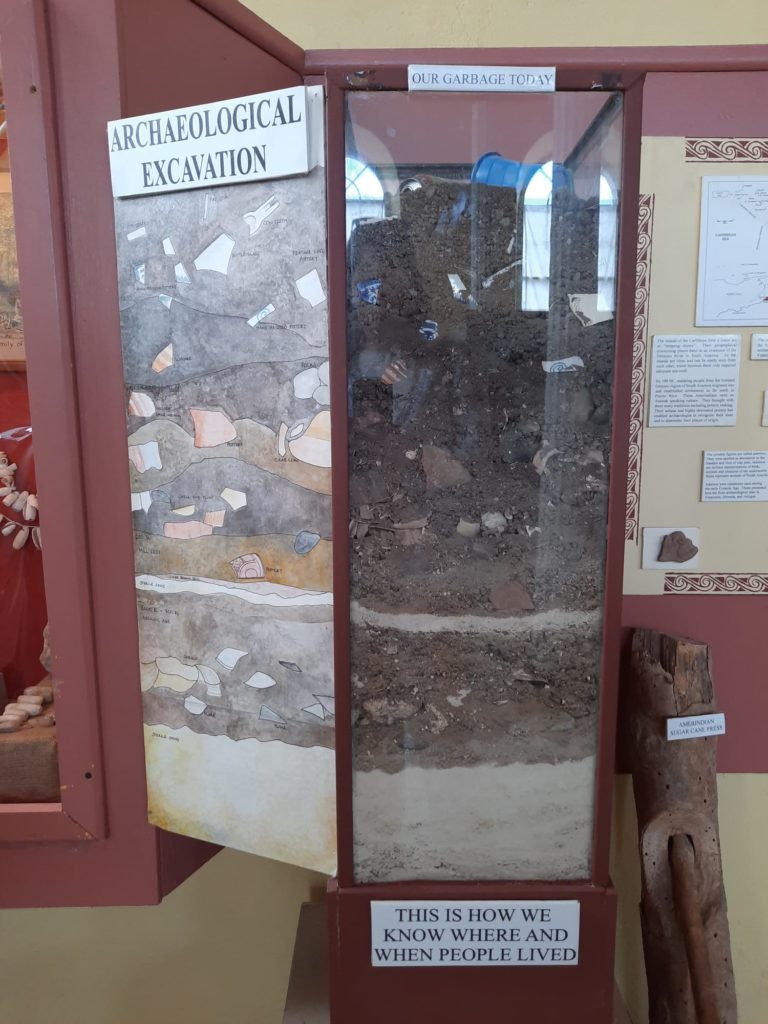

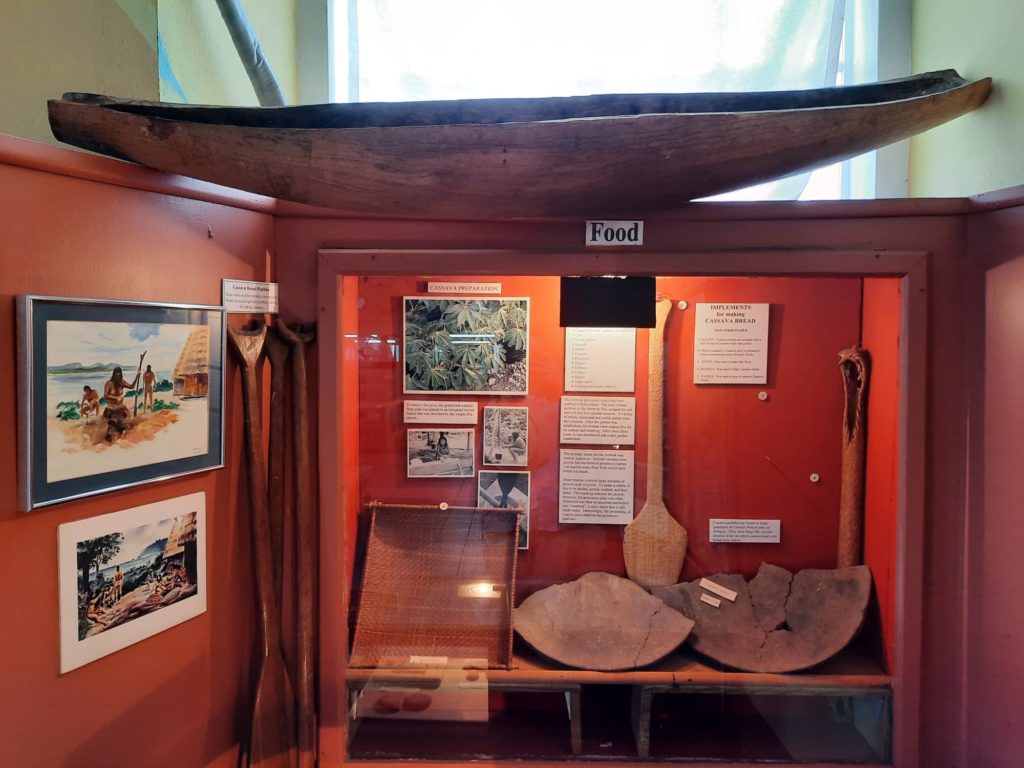
From Courthouse To Museum
The Museum of Antigua and Barbuda attempts to tell this entire history, from ancient geology to modern times. It has essentially one big room in which to do so. The museum is in the former St John’s Courthouse, dating to 1750 and possibly the oldest building in St John’s. Architect Peter Harrison, born in Yorkshire, started off as a merchant before training in architecture and designing a number of buildings in American and Caribbean colonies. The Court of Justice was on the ground floor of this building, with a Legislative Council and Assembly upstairs.
Part of the reason it is such a rare historic survivor is that the region is prone to earthquakes. A major one in 1843 caused extensive damage, including the destruction of St John’s Cathedral. In more recent times, a 1974 earthquake reached magnitude 6.9 on the Richter scale. Hurricanes are also a risk, although Barbuda has borne the most recent brunt.
The national museum has been here since 1985. Today the Museum of Antigua and Barbuda follows what is presumably the original layout, more or less. There is a large central space held up by metal columns with a wooden roof. Stairs lead off to an upstairs mezzanine, which today is a research centre. Most exhibits are in glass cases around the exterior walls or between columns. A decent-sized model of a whale calf, and a life-sized Sir Viv Richards in action, liven things up. The latter is also a nice photo opportunity for cricket fans.
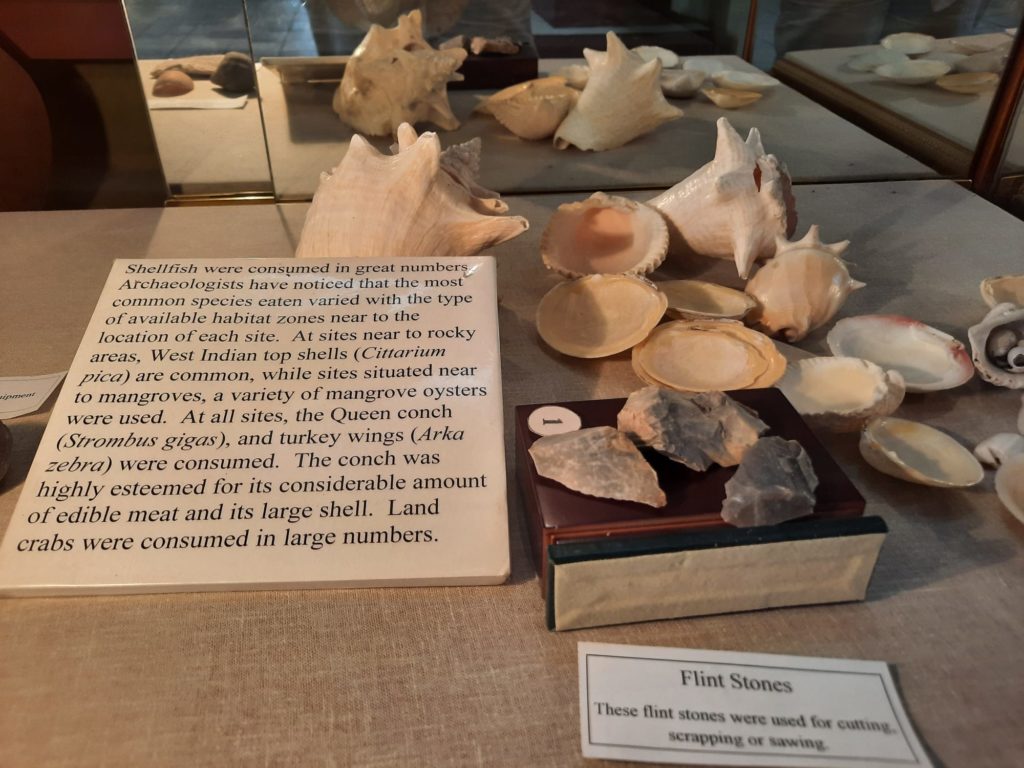

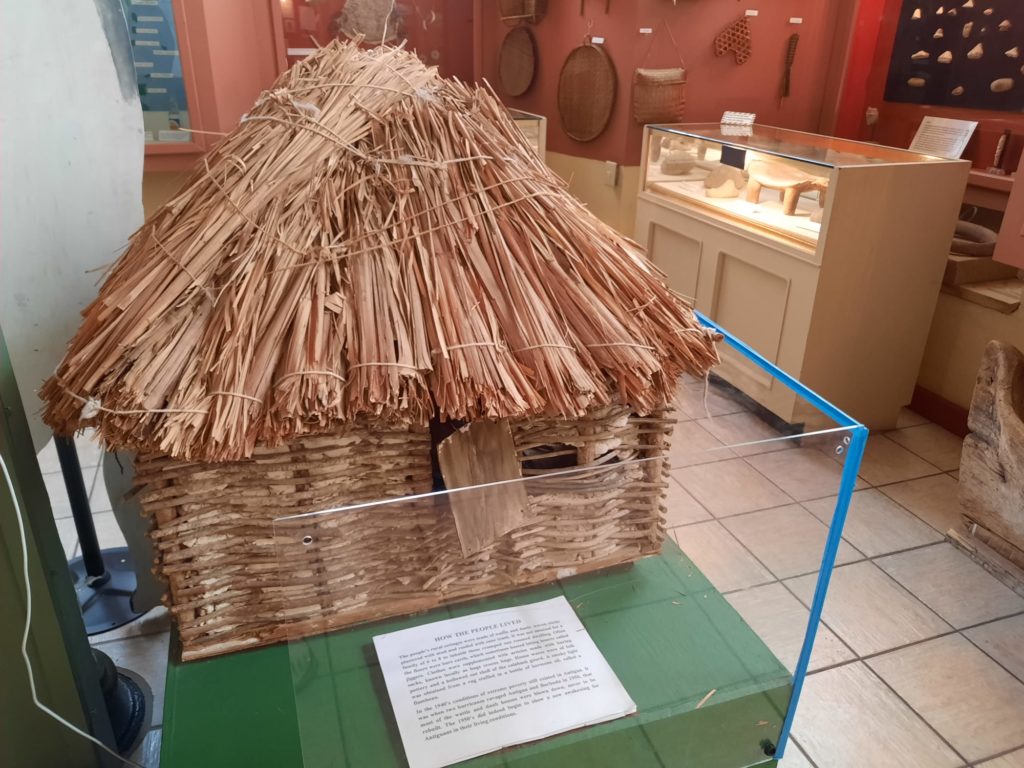
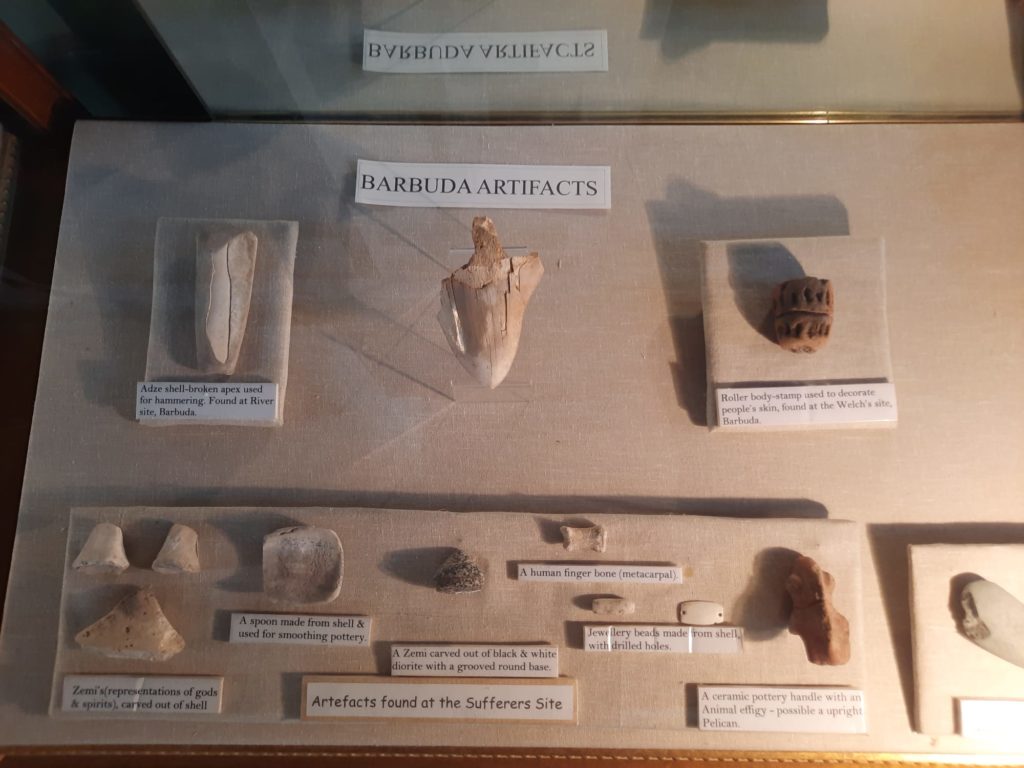
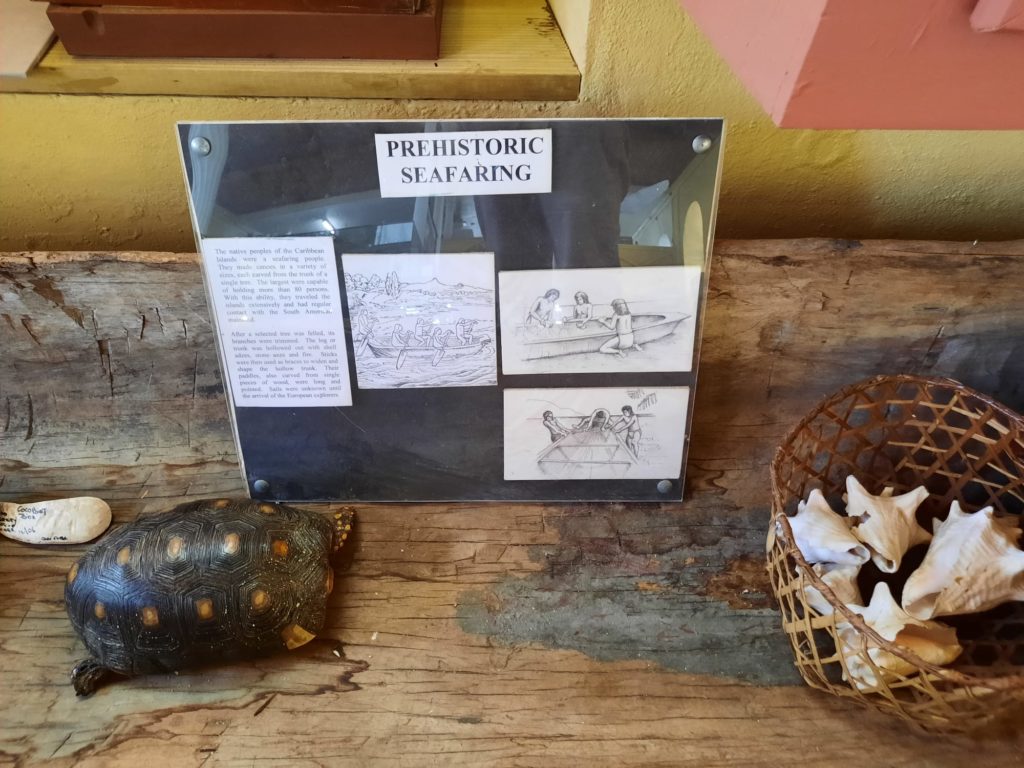
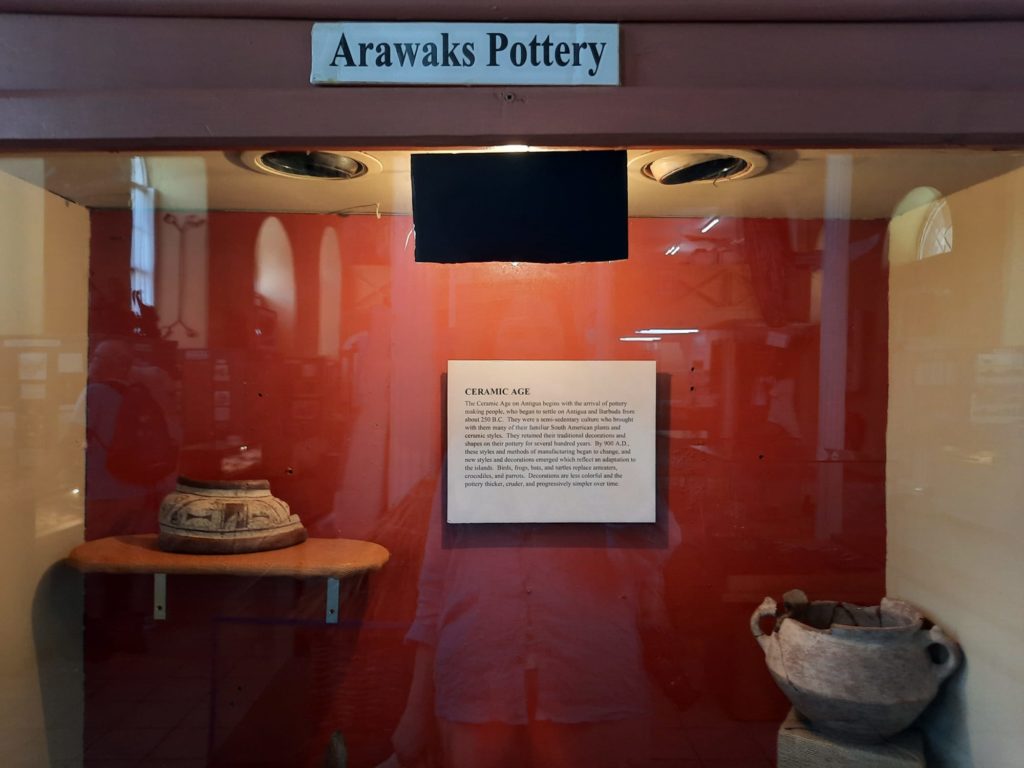
The Museum Of Antigua And Barbuda
Upon arrival at the Museum of Antigua and Barbuda, you will get a friendly welcome from a staff member at the centrally-located desk. They will likely also orient you so that you follow a sensible path from oldest to most recent history. You start, therefore, with geology, working your way around eventually to recent history and culture.
Throughout, the museum combines original artefacts with explanatory text panels. Where relevant you may find recent reconstructions, as in the case of a display on Arawak basket-weaving techniques. The information is accessible if plentiful. I estimate you need 30 minutes in the museum if you’re just looking around, a good hour to do it well, and maybe two hours if you’re going to read everything. I know from experience that there’s only so much I can retain at once, so I was more in the one hour bracket.
One thing I particularly liked was the effort to connect our contemporary lives with local history. Why is the local beer called Wadadli, for instance? It’s part of a trend for West Indian beers to name themselves after their island’s pre-Columbian name. An exhibit on archaeological strata, meanwhile, points out all the plastic garbage that will be our Anthropocene legacy. In a museum with relatively modest means, it’s a nice way to make the content relevant and connect with visitors.
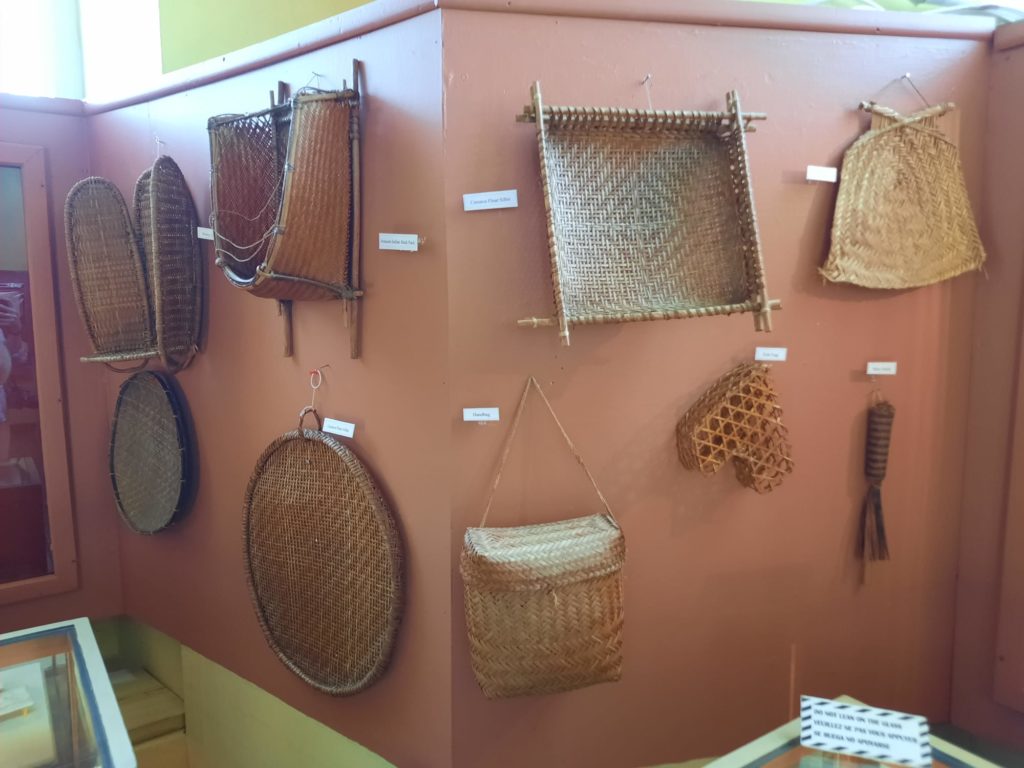
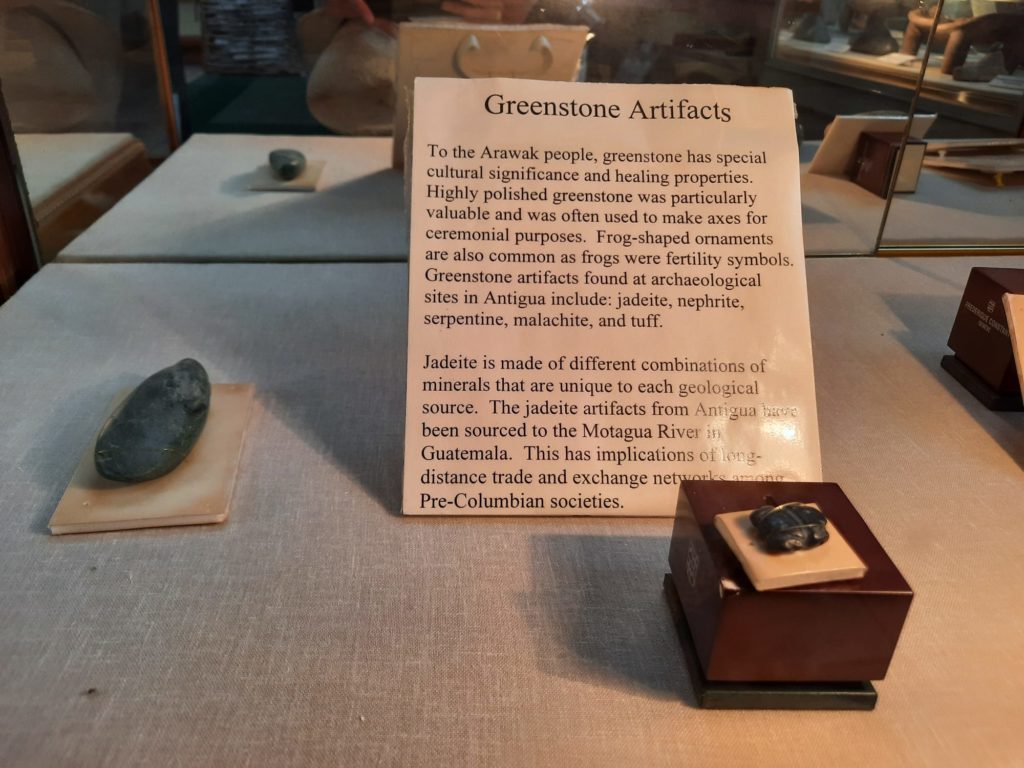

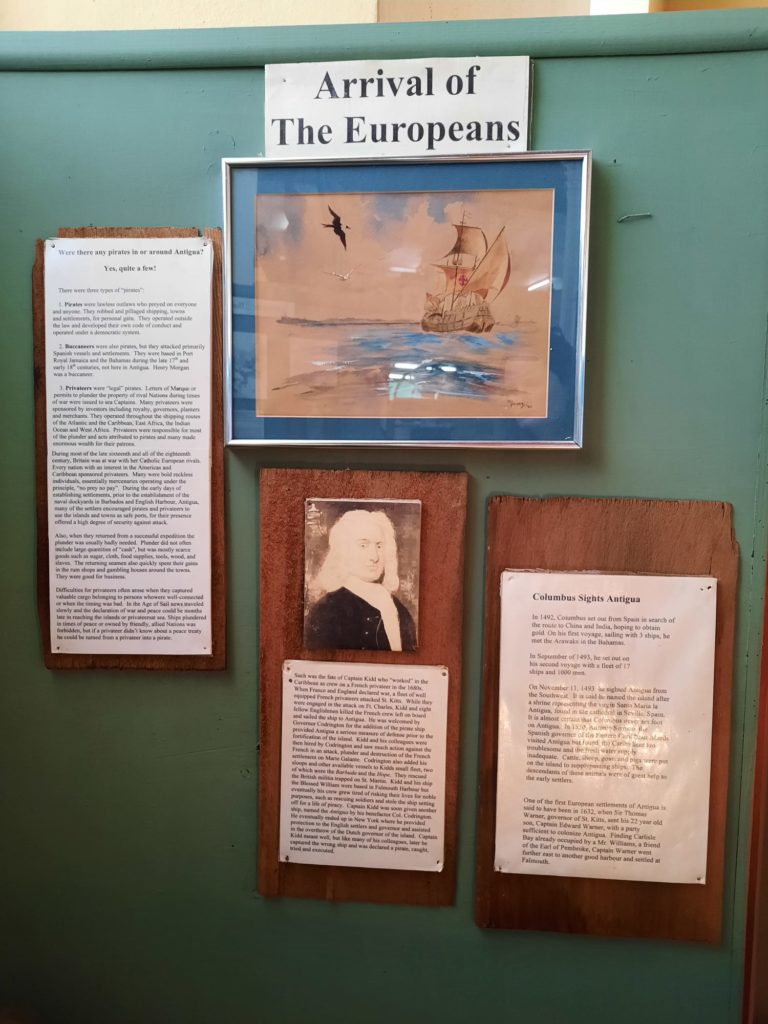
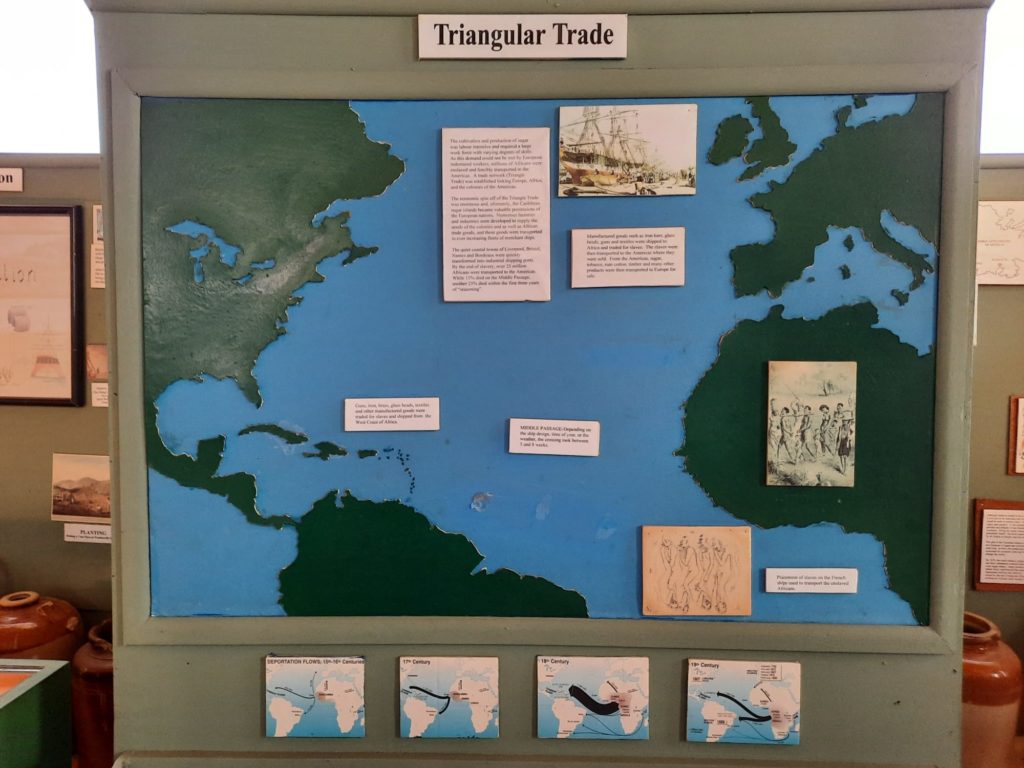

Making Sense Of A Nation’s History
One thing I quickly noticed in the Museum of Antigua and Barbuda was the tendency to delve into different topics. Everywhere you look, there is something different to explore. And here I come back to the point that if you’re trying to read everything, it’s probably too much. So pick a few topics that you’re interested in. Perhaps fishing techniques? Pre-Columbian religion? Pottery-making? Greenstone artefacts? The sugar industry? How to play Warri? I was rather interested in this one as I’d bought a set while at Shirley Heights. Or there’s resistance to slavery, a confronting topic. And don’t miss the deep dive into recent archaeology at Betty’s Hope.
The point being, there is something here for pretty much everyone. I took longer on the archaeological bits which are my special interest. The Urban Geographer lingered over sections on recent history and economy. As long as you set your own pace and look around for the things that interest you most, you’ll be fine.
It’s one of those museums which feels like it’s built up from donations and private collections. Hence the many specialist areas in miniature: what has been donated has been interpreted and then displayed. Not a bad attitude to take to encourage donations and collection growth, but this particular museum is probably at the limit for how far it can push this approach. Any more special topics and it would be hard to discern the core narrative about the islands’ development through the millennia.
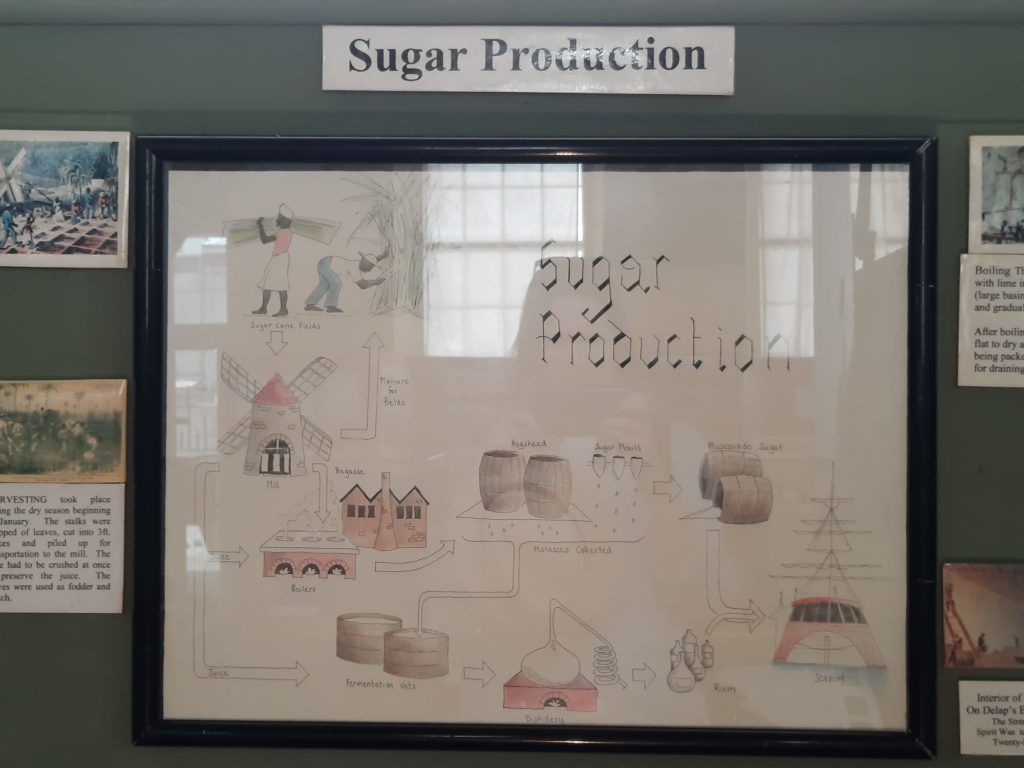
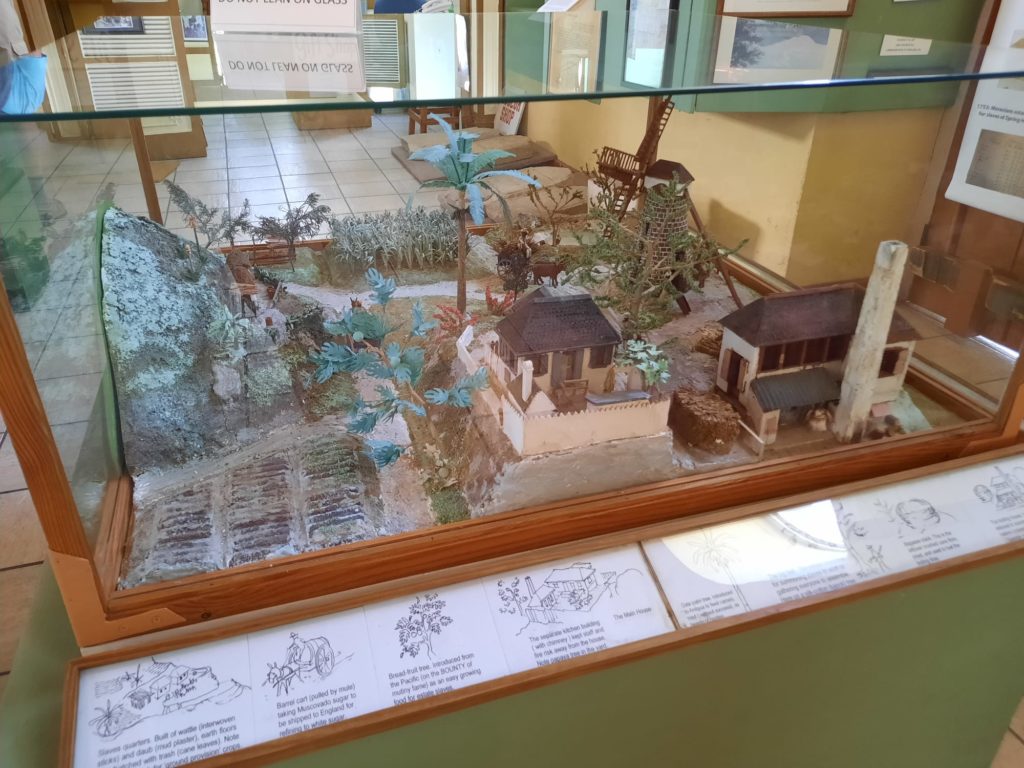

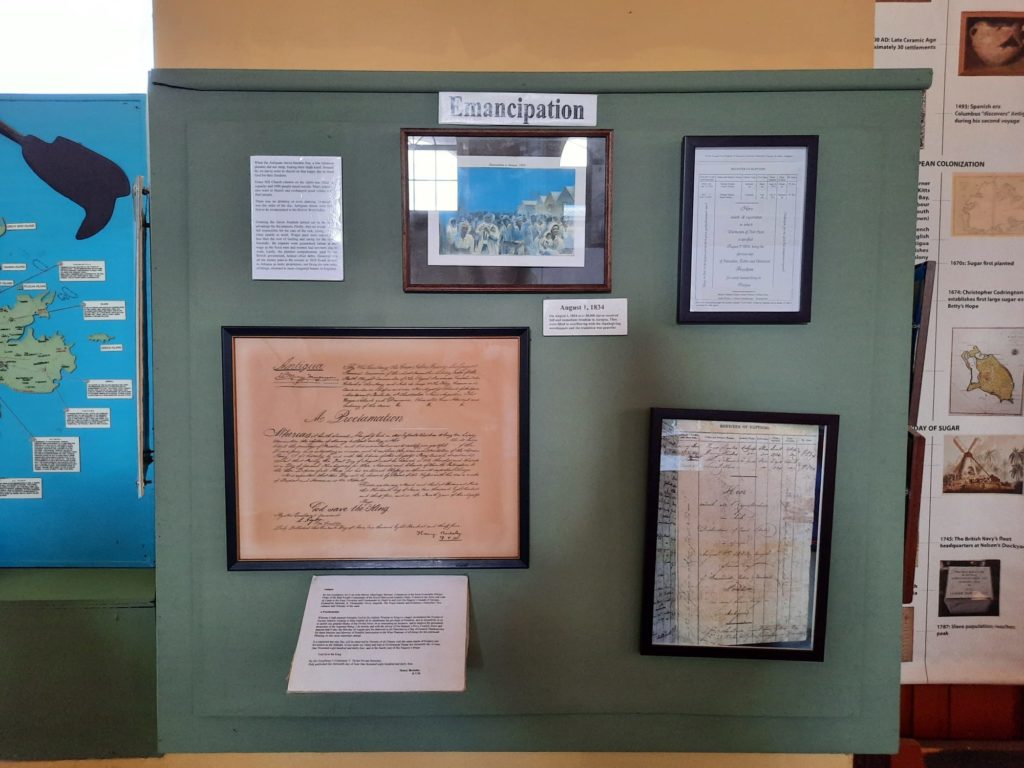
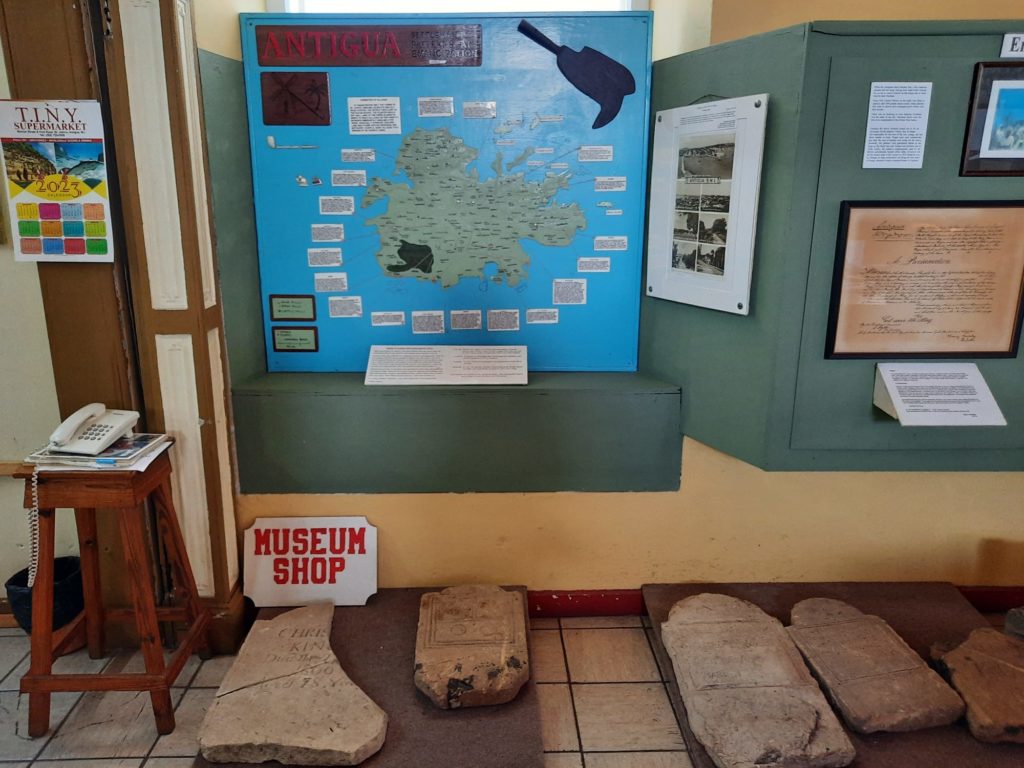

Slow Down And Enjoy
I don’t want to give you the impression that visiting the Museum of Antigua and Barbuda is anything other than pleasurable. We really enjoyed our visit here, and based on average visit time, so did others who were there while we were. The mix of exhibits makes for a nice friendly atmosphere. The fact that it was a hot day and there was air conditioning in the museum didn’t hurt either. Sitting reading about archaeological artefacts with a cool breeze blowing is basically heaven for me.
In terms of what I learned, as we have discussed above there was a lot. Other than the pre-Columbian history of the islands, there were a couple of topics I found really fascinating. One was the immediate and longer-term aftermath of the emancipation of slavery in 1834. Reading accounts of how plantation owners and other colonists reacted was interesting, as was the gulf between a lofty proclamation of rights and freedom, versus a reality of most workers carrying on with the same work they did before (and plantation owners sometimes saving money as a result).
As I had recently visited Betty’s Hope the information on archaeological excavations there, as well as some of the artefacts, also piqued my interest. As we learned in my last post, Betty’s Hope was the largest Antiguan sugar plantation of the influential Codrington family, and remained in their hands from the 17th Century until 1944. The site is now an open air archaeological site with a simple museum. But the material in the Museum of Antigua and Barbuda is more detailed and backed up with artefacts, so supplemented my understanding of what I had seen.
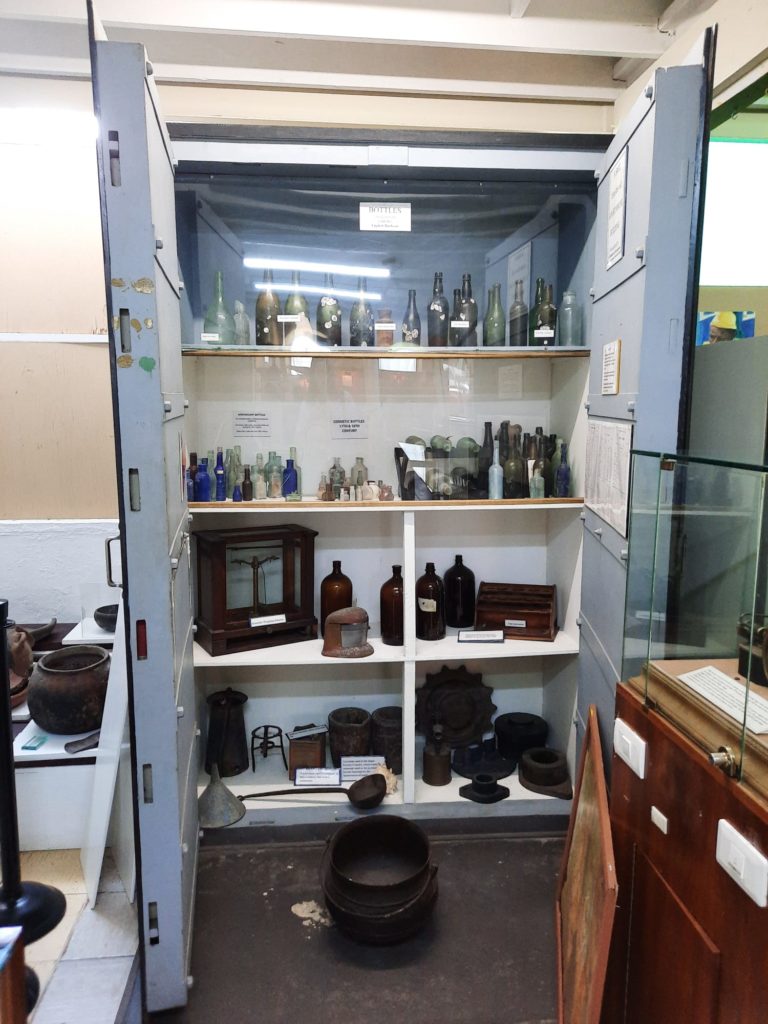
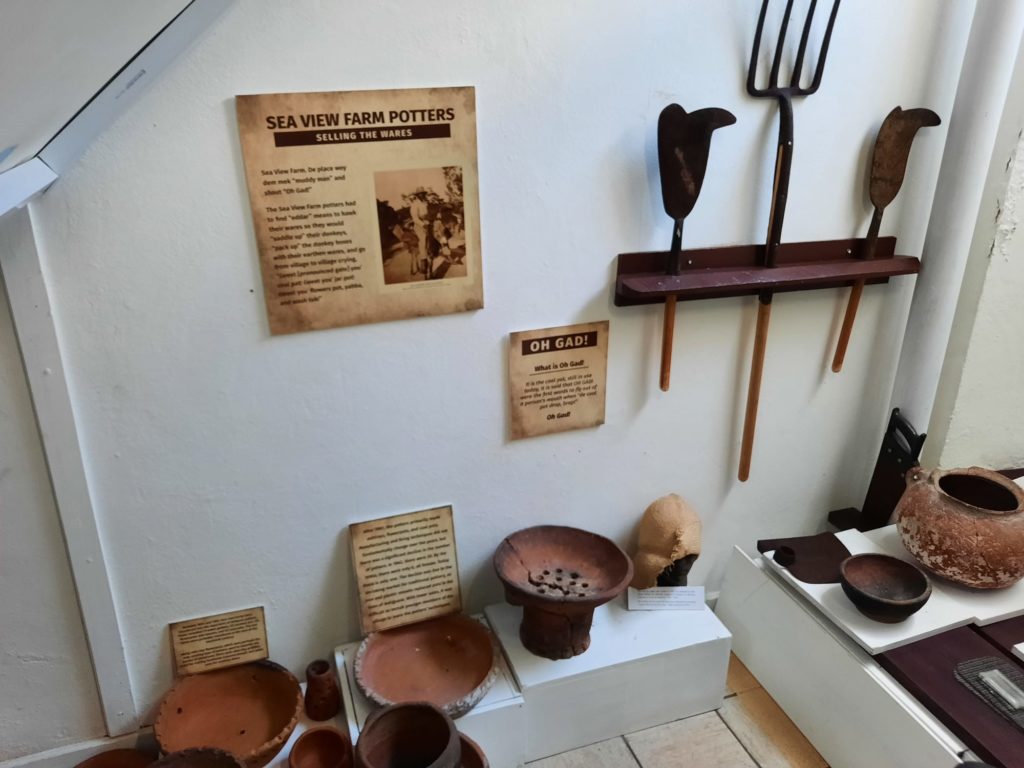
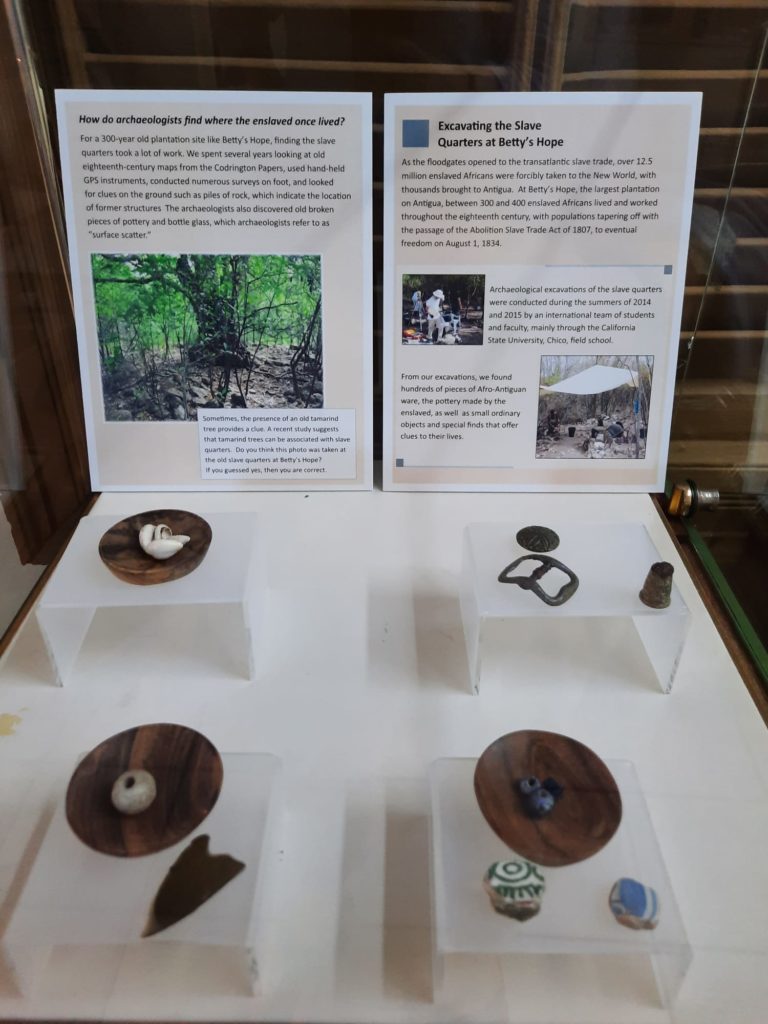
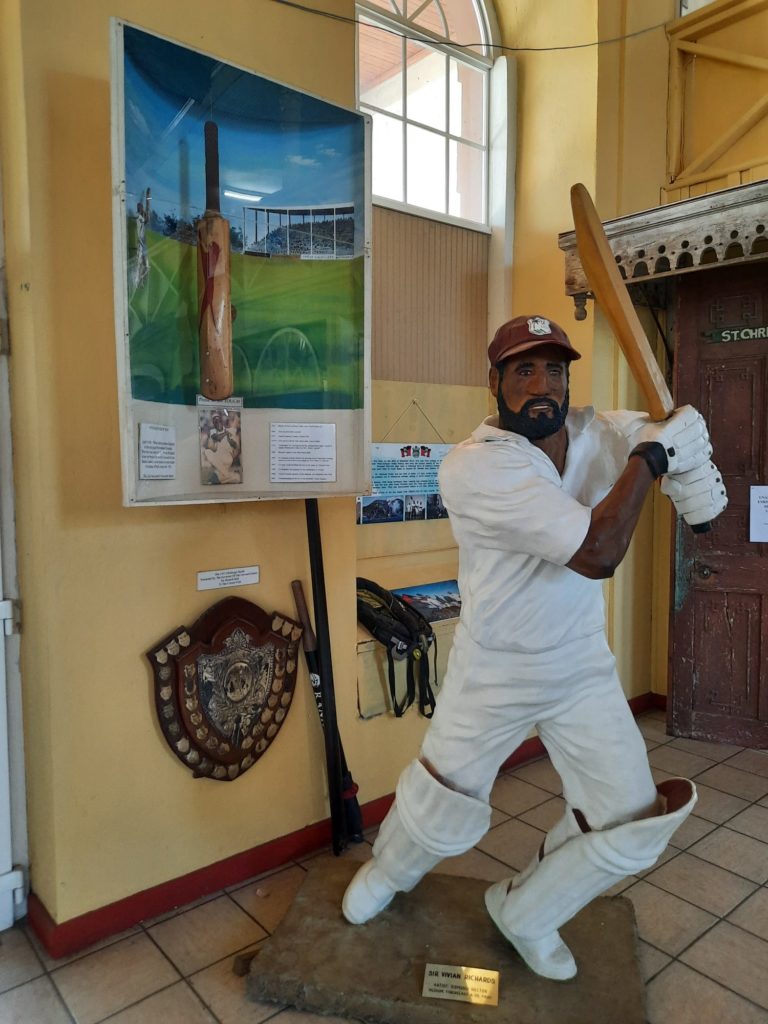


Final Thoughts On The Museum Of Antigua And Barbuda
If you have at least half a day in St John’s, I highly recommend taking the time to visit the Museum of Antigua and Barbuda. Other than the importance of supporting heritage insitutions like this, it’s a charming place to spend an hour or so. It gives a good overview of what makes Antigua and Barbuda special, as well as how it fits into a regional and global picture.
Something I did notice while in the museum is that there is relatively little information on Barbuda. This is likely a result of the islands’ different histories of inhabitation and colonisation, but seems something of a shame. There is an area in the centre of the main space, however, so look out for this.
The museum can easily be fitted into a walking tour around St John’s. Cricket fans can start at the Antigua Recreation Ground, but otherwise a natural starting point is St John’s Cathedral, then the museum, then a wander towards Redcliffe Quay. Even if you are not stopping in St John’s you may pass through, as we did for instance after our day trip to Barbuda. In that case an abridged version of that walk is lovely with sunset colours, and even if its outside the museum’s opening hours you can admire probably the oldest building in town.
Salterton Arts Review’s rating: 4/5
If you see this after your page is loaded completely, leafletJS files are missing.

